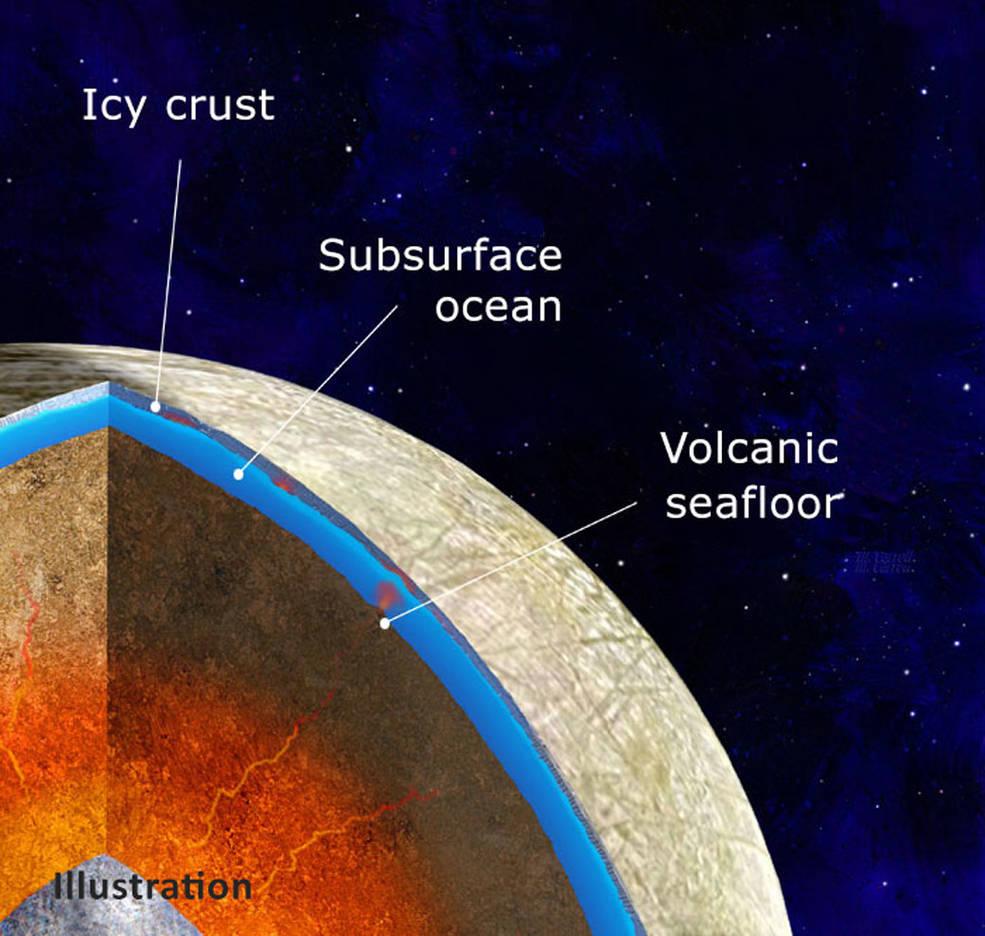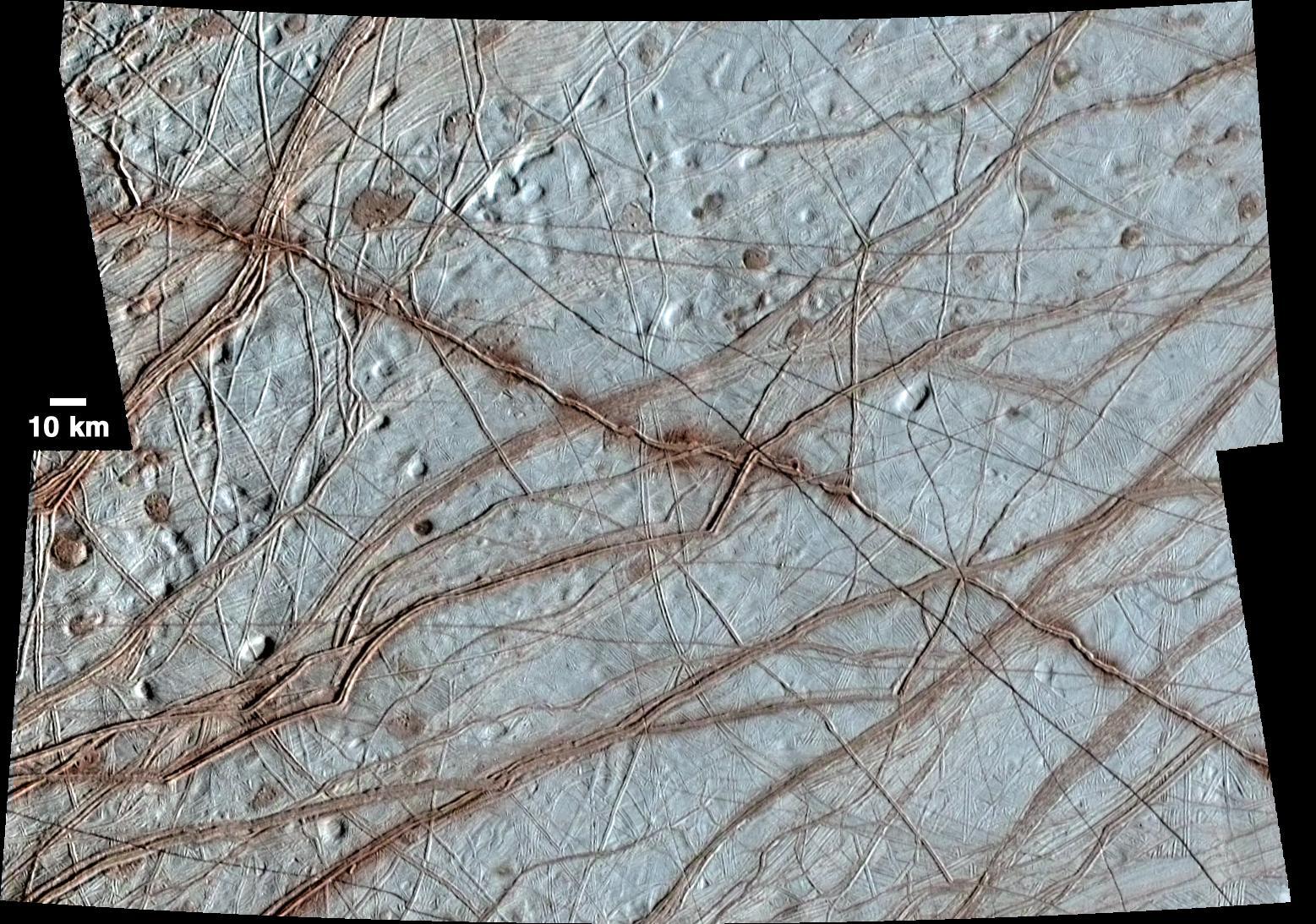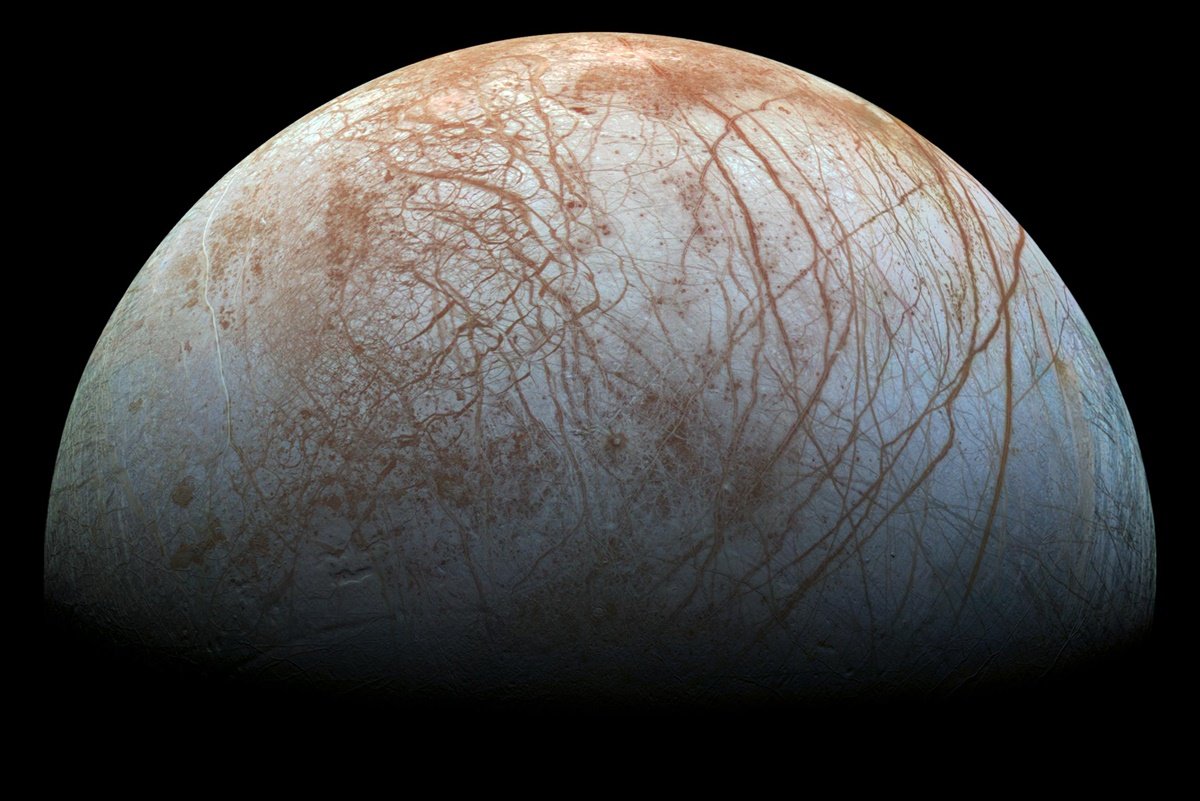Using supercomputer modeling, the researchers discovered that ocean currents on Jupiter’s moon Europa may be responsible for changes in the rotation of the moon’s icy surface. The research was published in the journal JGR Planets.
Europa is one of Jupiter’s four Galilean moons discovered in 1610. Some features of the moon visited by six spacecraft attracted attention.
The moon Galileo has an icy surface with a few cracks and markings that may indicate activity on the moon.
It was long believed that these traces were the product of the impact of Jupiter’s gravitational pulls on Europa. However, all this activity may be the result of another phenomenon.
For some time, researchers have predicted that there is a liquid ocean beneath the moon’s entire icy crust, and some models show that the planet’s surface is moving at a different speed than what is shown inside.
This phenomenon can be attributed to ocean currents, according to research by Hamish Hay, a researcher at the University of Oxford and a former postdoctoral student at NASA’s Jet Propulsion Laboratory.

By examining computer models of Europa, Hay was able to observe that ocean currents, created by the warming and cooling of water, can create a drag force that changes the rotational speed of the moon’s frozen crust.
Now these changes in rotational speed, caused by accelerating and decelerating currents, are what will create ridges and cracks in the planet’s surface instead of Jupiter’s pulls.
The model was quite accurate in predicting and explaining the motion of the satellite’s crust, and could be verified in a few years.

Not just as a curiosity, this new model will give the Europa Clipper Mission another piece of data to observe. The spacecraft, scheduled for launch in 2024, will analyze the surface, structure and activity, as well as whether the satellite can support life.
Expected to reach its destination in 2030, the Europa Clipper will be the largest planetary exploration spacecraft ever launched by NASA.
Source: Tec Mundo
I’m Blaine Morgan, an experienced journalist and writer with over 8 years of experience in the tech industry. My expertise lies in writing about technology news and trends, covering everything from cutting-edge gadgets to emerging software developments. I’ve written for several leading publications including Gadget Onus where I am an author.













